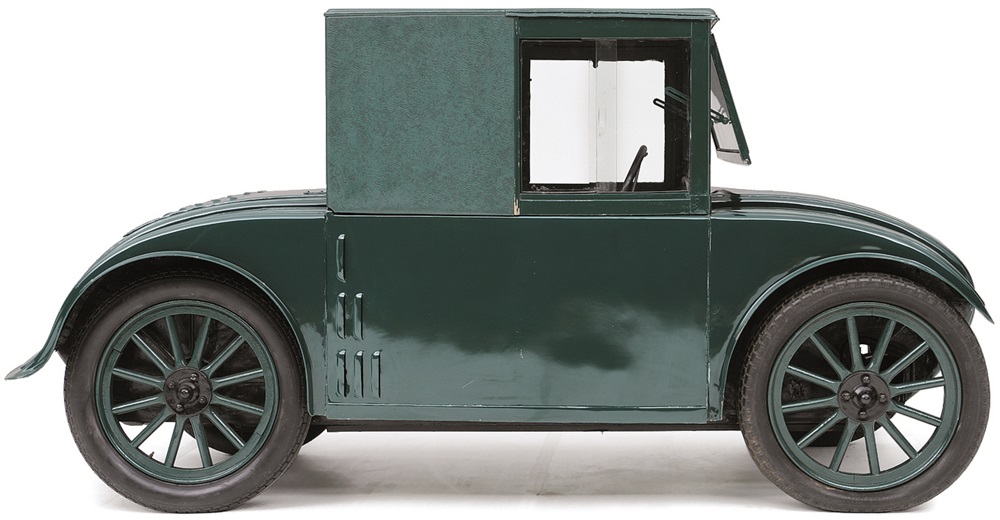1926 Hanomag 2/10-HP 'Kommisbrot'

The descriptions of the Classic Cars in the Directory were partly generated or supplemented with the help of artificial intelligence (AI). The content may occasionally not always be entirely accurate or factually correct despite careful checking.
The Hanomag 2/10-HP 'Kommisbrot' 1926 is a vintage vehicle that was manufactured by the German Hanover Motor Works (Hanomag) during the early 1900s. This particular model was produced from 1924 to 1928 and is also known as the "Kommisbrot" or "Salesman's Bread" in Germany. The nickname stems from its small size and square shape, resembling a loaf of bread.
The Hanomag 2/10-HP 'Kommisbrot' 1926 is a two-seater microcar that measures 2.7 meters in length and 1.2 meters in width. It has a wheelbase of 1.6 meters and a ground clearance of 20 cm. The car's body is made of steel and is supported on a ladder frame chassis.
Powering this vintage vehicle is a 625cc, two-cylinder, water-cooled engine, which is capable of producing 10 horsepower at 2,800 rpm. This engine is mounted at the rear of the vehicle and is coupled to a three-speed manual transmission that drives the rear wheels. The Hanomag 2/10-HP 'Kommisbrot' 1926 has a top speed of around 70 km/h and can accelerate from 0-50 km/h in about 30 seconds.
The car's suspension system consists of transverse leaf springs at the front and rear, with hydraulic dampers. The steering mechanism is a worm and segment steering system, which is operated through a steering wheel located on the right-hand side of the driver's seat. The brakes are mechanical drums on all four wheels, with a cable-operated handbrake.
The Hanomag 2/10-HP 'Kommisbrot' 1926 has a simple and practical interior layout. The driver and passenger sit on a bench seat, with a gear lever positioned between them. The dashboard features a speedometer, fuel gauge, and ammeter, with a few switches and knobs for controlling the lights and starting the engine. The car's windows are fixed, and the doors are hinged at the front.
Overall, the Hanomag 2/10-HP 'Kommisbrot' 1926 is a charming and unique vintage car that reflects the ingenuity and efficiency of early automotive design. Its compact size and economical engine make it an ideal city car for those who appreciate simplicity and practicality in their automotive choices.
Milestones
- In 1926, Hanomag launched the 2/10-HP 'Kommisbrot' (meaning "Commission Bread") model. - This was a small and lightweight car, weighing just 450 kg (992 lbs). - It was powered by a 2-cylinder, 500cc engine, which produced around 10 horsepower. - The car had a top speed of around 60 km/h (37 mph). - Despite its small size, the 'Kommisbrot' was designed to be durable and reliable, making it popular with drivers in rural areas. - The car also featured a number of innovative features for its time, including a four-speed transmission and hydraulic brakes. - Production of the 'Kommisbrot' continued until 1931, with around 15,000 units produced in total.Technical
- The Hanomag 2/10-HP 'Kommisbrot' was a small car produced by Hanomag from 1925 to 1928. - It was powered by a 2-cylinder air-cooled engine with a displacement of 498cc, producing 10 horsepower at 2,800 RPM. - The engine featured a side-draft carburetor, Bosch magneto ignition, and splash lubrication system. - The car featured a 3-speed manual transmission with a rear-wheel drive layout. - The chassis was a ladder frame made of pressed steel, with semi-elliptical leaf springs at the front and a solid axle with quarter-elliptical springs at the rear. - The car had a wheelbase of 1,950 mm and a track width of 1,020 mm. - The bodywork was designed by Karl Jenschke and featured a rounded, aerodynamic shape reminiscent of a loaf of bread (which earned it the nickname 'Kommisbrot', or 'salesman's bread'). - The car could reach a top speed of around 60 km/h and had a fuel consumption of around 5-6 liters per 100 km. - Despite its small size and low power, the 2/10-HP 'Kommisbrot' was relatively expensive for its time, with a price tag of around 4,250 Reichsmarks in 1926.